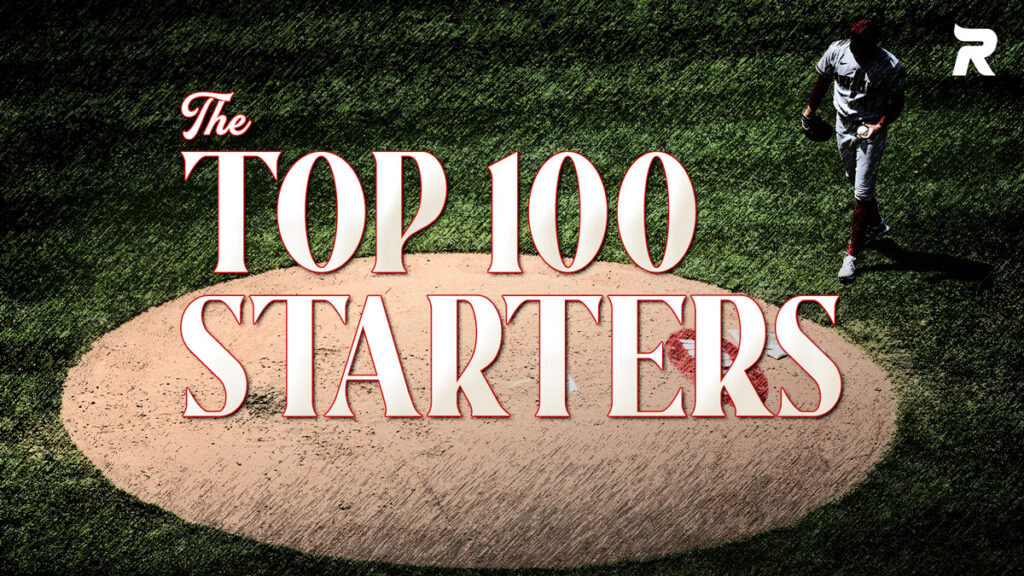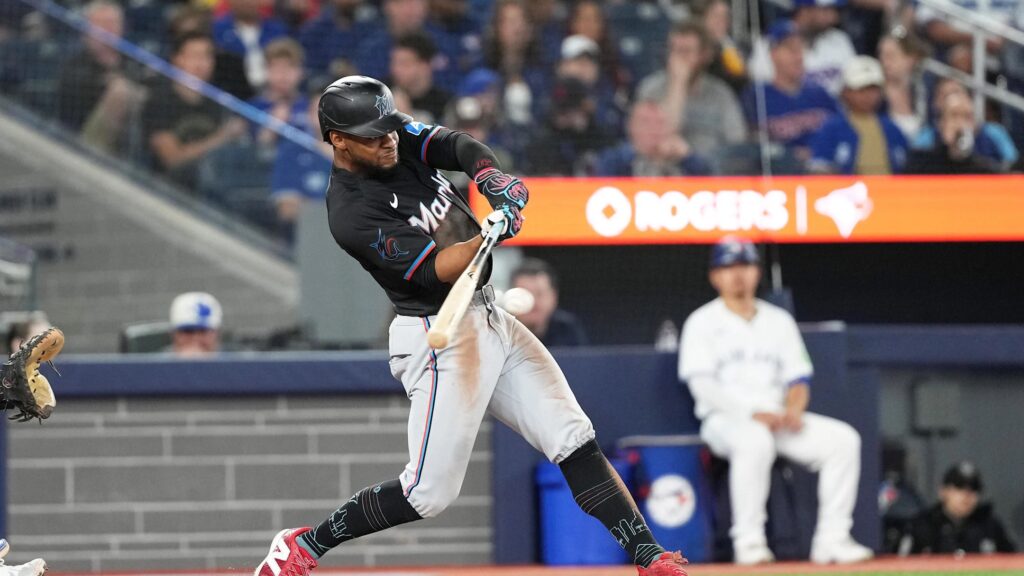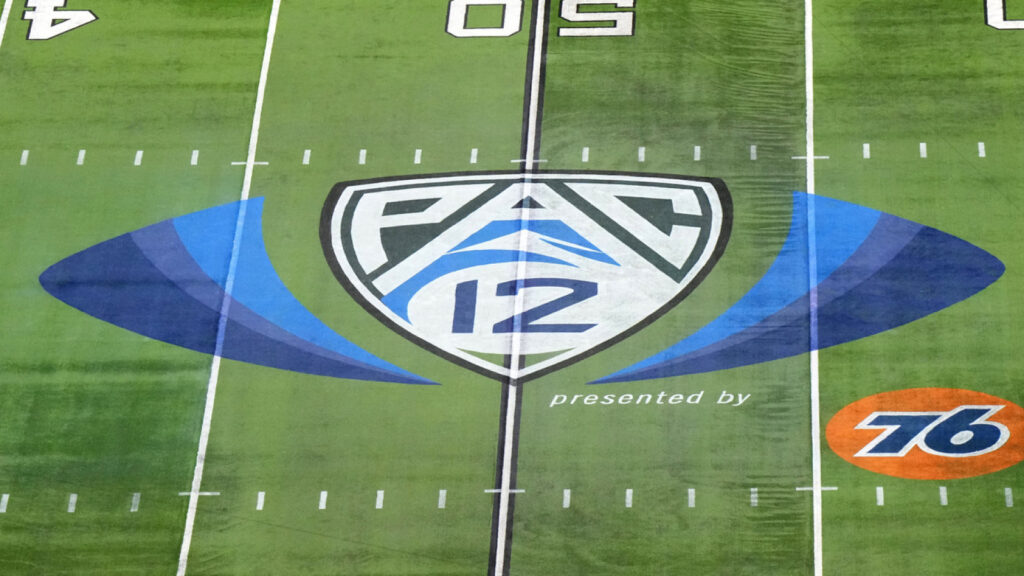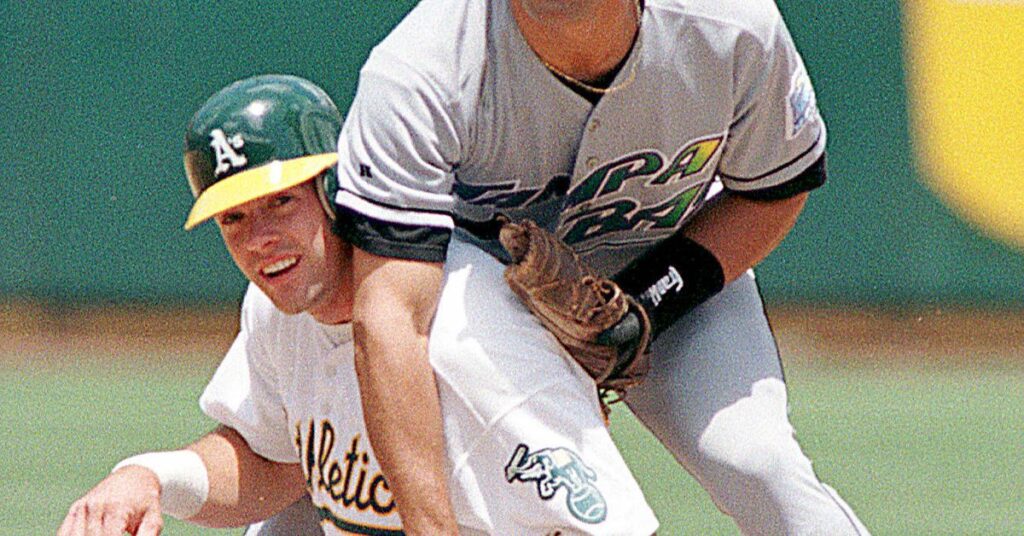BLOOMINGTON, Ind. — Eighty-four-year-old Roberta Burkholder, her white parka zipped to her neck, stands alongside her 81-year-old husband, Orval. She arrived here, at the back doors of Indiana University’s Simon Skjodt Assembly Hall, around 7 a.m. It’s now pushing 5:30 in the evening. To their left are Trenton Kemp and his 13-year-old son, Maguire. They flew into town two days prior from Boise, Idaho, and planted at this particular spot around 6:30. Another gentleman, Josh Kennedy, flew in from Norman, Okla., before parking here before dawn.
Chris Coats, a kindly white-haired gentleman dressed head-to-toe in Hoosier gear, came comparatively late, around 8 a.m., but has since become the de facto mayor of this pop-up community. He knows everyone’s backstories, if not all of their names. The lady behind him, Coats explains, was smart enough to pack chicken salad sandwiches, and that fella over there, the one in the overalls? He bought four pizzas and some Wendy’s and generously shared them with everyone.
This cross-section of Americana — young, old, male, female — forms the head of a line that snakes in all directions; so many people in line a 10-year veteran of the security team at IU prays that they all have a ticket to get in the building. They have collected here, at the backdoors of a basketball temple in a basketball-fervent state, to get a glimpse of a basketball shooting star.
Caitlin Clark is no longer merely a basketball player. She is an experience, an outrageously talented athlete swaddled in NIL, social media and female empowerment who encapsulates the zeitgeist of college athletics. Clark shoots, literally and figuratively, into March, trailed by young girls who react to her shots like Swifties to a favorite song, by girl dads giddy to find common ground with their daughters, by long-committed women’s hoops fans thrilled to finally get their long overdue attention, by ordinary hoops fans who simply want to see a good player perform, and by curiosity-seekers hoping to get a glimpse of a phenomenon.
For the next few weeks, Clark will captivate this rabid audience who, like those assembled at Indiana last month, will buy tickets or turn on their televisions in search of more than just a basketball game. They are awaiting a show.
“We came for Caitlin Clark,” says Roberta, the octogenarian, as she and Orval get swallowed by the masses when the Assembly Hall doors finally open. “I’ll do anything once.”
Stephen Curry’s life changed after Davidson vaulted into the Elite Eight in 2008. (Chris Keane / Icon Smort Media via Getty Images)
College basketball has long been uniquely positioned to create single-player hysteria. The identifiability of its athletes, combined with the potential for individual dominance and buzzer-beating chaos, is the perfect cocktail for star-making. Clark is hardly the first to walk into a singular orbit. The man she surpassed to become the NCAA’s all-time leading scorer regularly attracted a crowd that stuffed the old Cow Palace at LSU to the rafters. A hot-shooting Mormon turned BYU into must-watch TV and a scrawny kid out of North Carolina co-opted March Madness into his own game of H-O-R-S-E.
Clark’s extra X chromosome adds a nuance that Pete Maravich, Jimmer Fredette and Steph Curry didn’t have to navigate. In an idyllic world, it would be a non-issue, but in 2024, it is, at least, a conversation. Clark’s gender, however, is not what’s driving the hysteria. It is spurred, just as it was with Maravich, Fredette and Curry, by the possibility of the extraordinary.
Asked what it might be like to see Clark land a logo 3 in person, Maguire Kemp’s eyes widened. “That would be so cool,” he says in the parlance of teenage hyperbole.
There is, of course, a person in the middle of the maelstrom. Clark is a 22-year-old college student, an otherwise ordinary middle child of Anne and Brent, raised in the otherwise ordinary town of West Des Moines. She played her first college home game in front of a pandemic-controlled crowd of 365. She opened her senior season playing in front of 55,000-plus in an exhibition game on a football field, setting up a world in which Clark’s normal is entirely abnormal.
Her life now is inspiring black-and-yellow overall-wearing fans to brazenly rush up 17th Street in Bloomington, Ind., and to pop up like whack-a-moles among the sea of Hoosiers’ red and white whenever Clark scores. It is State Farm ads, cereal boxes and little girls swarming for autographs. It’s personal security guards for road games and crowds around buses. It’s opposing fans at once rapturous about seeing her perform, and then giddy to see her fail. And it comes neatly packaged in the burden of expectation and the demand for performance. “You don’t have 30 points, and it’s a bad game,” Fredette says. “Actually, 30 is average. If you have 30, they ‘held’ you to 30.”
The regular folks drawn to this particular flame are legion — Roberta, Orval, the Kemps and the Coats. There are, however, but a handful who can relate to being the flame. Fredette is one. Another rolls his eyes and shakes his head when asked to remember what it was like when his own March and beyond madness arrived. In the span of four NCAA Tournament games, three of which were upsets, Stephen Curry (he went by his whole first name back then) averaged 32 points and connected on 23 of 52 3-pointers. Baby-faced and wearing baggy shorts that looked as if they could swallow him whole, Curry launched Davidson into the Elite Eight, his run ending only after a Kansas double-team forced him to pass and Jason Richards’ 25-footer fell short.
“It was like that ‘Hello, world,’ Tiger Woods moment,’’ Richards says. “We normally weren’t on TV very often. No one talked about us, or knew anything about Stephen. Then all of a sudden, we were springboarded on this national stage. It was like, ‘OK, this is different.’’’
The spotlight was directed at Curry, but everyone enjoyed the beam. After upsetting Georgetown in the second round, the Wildcats returned to their tiny campus to a crowd far outnumbering the 1,600-member student body. Reporters suddenly clogged the sidelines at practice, and previously anonymous players, who had only practiced what their autographs might look like, found themselves actually inking them.
The insta-fame earned Curry a chat on the late-night sofa with Conan O’Brien, a trip to the ESPYs and 10,000 new friend requests on Facebook, then the social media barometer of influence. Still, when Curry’s junior season debuted, newspapers added phonetic spelling alongside his first name (STEFF-en, explained the Charlotte Observer), and Curry naively thought he’d duck back into the safety of his Davidson bubble.
Instead, Curry went from ordinary student on the tiny campus to a somebody. The school doubled its season-ticket sales and sold out every game, after only one sellout the year before. It didn’t really hit Curry until Davidson went on the road. “It was really a very chill experience until the next year,” he says. “Everywhere we went, it was crazy, especially in conference.” The Wildcats then played in the Southern Conference, home to mid-majors with bandbox gyms that rarely attracted a crowd. “That first conference road game …” This is where Curry’s voice trails off, and his head shake does the talking.
Signs at Carolina First Arena declared the game a sellout. Darius Rucker sang the national anthem. When Curry stepped to the free-throw line for his first shots, students chanted, “Overrated,” with gusto. He finished with 29 points.
That fanfare suddenly became Curry’s reality. According to a 2009 Associated Press article, Samford averaged 717 fans per game; more than 5,000 showed up to see Curry. UNC Greensboro typically brought in 969 fans per game; officials moved the Davidson matchup to the Greensboro Coliseum, where a crowd of 11,000-plus appeared. Fans lingered so long for autographs that then-conference commissioner John Iamarino convened an emergency league meeting to set up extra security for road games.
Richards, who now works for Curry as the athletic director for his Underrated Golf Tour, attended Clark’s game at Northwestern with his sister, Lindsay, who played at Iowa. It felt incredibly familiar — the packed arena, the big shots (Clark went for 35 that night). But especially the fans, the ones who hung over the banisters in the hopes of scoring a high-five as Clark walked through the tunnel.
As he’s ridden shotgun with Curry throughout his NBA career, Richards has witnessed that same clamoring in every arena that Curry visits. Watching Clark sign autographs that evening, he thought a lot about Curry and their 2008 run. “She stopped to sign every kid’s autograph,’’ he says. “To understand and appreciate the magnitude of what she’s doing, Stephen has always had that same awareness. It’s an incredible gift.’’
Curry, though, is now 35. He’s accustomed to the chaos, but the world is different than in 2008. Watching from afar – and he does watch – Curry marvels at how Clark is managing her mayhem.
“I couldn’t imagine what it’s like now,” Curry says. “Mine was before Twitter was really a thing. I didn’t get Instagram until I was a junior in college. So just the social media element makes it so much crazier.”

Jimmermania took over BYU and America in 2011. (Ethan Miller / Getty Images)
On home game days, Fredette’s now-wife and then-girlfriend, Whitney, would drive her car into the belly of the Marriott Center. There it would sit, a makeshift getaway car that allowed Fredette, a BYU student, to traverse the BYU campus after a BYU basketball game without being mobbed by fans.
More than a decade later, Fredette still can’t believe it all happened. “Life-changing,” he says. “That’s the only way I can describe it. It was life-changing.’’ Fredette can pinpoint the moment it all happened — Jan. 26, 2011. He’d been building toward it for a while. As a junior, he scorched Arizona for 49, TCU for 45 and Florida for 37 in a double-overtime NCAA Tournament win. In his senior season, Fredette dropped 47 at Utah and 42 at Colorado State and garnered a few magazine covers. Nothing, however, prepped him for the aftermath of the No. 9 Cougars home game against No. 4 and undefeated San Diego State and its generational star, Kawhi Leonard.
Fredette went for 43 that night, and students who had spent hours camped out in the sub-zero temperatures stormed the court, ready to hoist Fredette in the air. On Twitter, Kevin Durant called Fredette “the best scorer in the world.” Rapper Nelly declared him “the truth.” Soon Jimmermania had a lexicon — a long-distance 3 from Fredette equated to getting “jimmered;” an anthem — a parody rap song, entitled “Teach Me How to Jimmer;” and a space on the ESPN ticker. “It felt like one day we could go out to dinner and the next day, something happened and people were taking pictures all of the time,” he says. “It was all of a sudden this entirely different type of lifestyle. I’m not saying I didn’t enjoy it. It was unbelievable. But it sort of stunned me.”
Like Curry before him and Clark after, Fredette sold out visiting buildings — a game at TCU in 2011 marked the Horned Frogs’ first capacity crowd in four years. He remembers rolling up to one game after another, eyeing the lines of fans waiting for him. Reporters flocked to his tiny hometown in upstate New York to get the story about his roots. How his big brother, T.J., only let him play pickup if he shot from a far-off cement slab, so Fredette learned how to make the shot, and how his mother came up with his nickname (his given name is James). “It’s like you become this thing,” Fredette says. “Everyone knows your name, and you can almost feel it, how it changed. It’s happening to you, but it doesn’t feel like it’s real. It’s so hard to describe.”
Fredette has paid special attention to Clark this season. The two have met, their reps setting them up for a shooting competition on Sue Bird’s docuseries “Sue’s Places.” He admires Clark’s mechanics, how she leans into her shots in transition and uses her legs, how her shoulder is always aiming toward the rim to ensure it doesn’t lurch right or left. He laughs at people who concentrate solely on her long-distance shooting and overlook the rest of her game. He got the same rap, even though less than half of his senior season field goals (8.5 out of 20.7) came from beyond the arc and he averaged 4.3 assists.
He loves that she’s not afraid to play with a little bit of swagger, because he also knows that the adoration is always tempered. “Just as many people want to see you fail,” he says. To his point, at Indiana, one student proudly displayed his whiteboard on the jumbotron, the one where he charted Clark’s “flops and whines.” Another held up a cell phone, displaying a graphic she created that read “22 =,” followed by emoji of a baby and a bottle.
“Be authentic, that’s all that matters,” Fredette says. “Be yourself because no matter what, you’re not going to have it forever. Enjoy it while it lasts.”

Caitlin Clark signs autographs after the game against Ohio State on March 3 in Iowa City, Iowa. (Matthew Holst / Getty Images)
Indiana is not new to hoops hysteria. The state is home to 10 of the country’s 12 largest high school gyms, and in 1990, 41,000 packed the Hoosier Dome to watch Damon Bailey in a high school state championship game. In Indiana, they name hotels after basketball stars (the Steve Alford All-American Inn), devote museums to high school hoops, and supply the playbook and name (Hoosiers) for a classic Hollywood underdog story.
But on a relatively temperate Thursday evening in February, even veterans wonder at the steady stream of humanity entering Assembly Hall. It seems as if the arena must be made of elastic; how else to absorb so many people? “They better all have tickets,’’ says one 10-year security guard. “I’m not dealing with that.’’
As the back-of-the-liners finally make their way toward the doors, Ryan Skaggs idles inside an SUV parked across the entryway to a tunnel. He has two degrees from IU and is working on his third. He’s also a 12-year veteran of the university police force. As part of his job, he regularly travels with the men’s team to road games and works security for home games with his K-9 sidekick, Cash. He was here for what IU fans call the “Wat Shot,’’ Christian Watford’s epic buzzer-beater to beat Kentucky in 2011. “This feels like that, but it’s about her, not a big win,’’ he says. “She’s a phenom, right? That’s what this is. Once in a lifetime chance to see her play.’’
Tonight, Skaggs has two jobs. The first is here, ensuring that no one can access the tunnel where Clark will disembark from the team bus. His other is as Clark’s security guard, there to make sure that nothing goes wrong, or more that “everyone has fun.’’ He does not consider himself the fanboy type, but Skaggs admits to considering bending his own rules. “Maybe if she wins and she’s in a good mood, I’ll be able to sneak a picture with her,” he says sheepishly.
But Iowa does not win. The 14th-ranked Hoosiers handed Clark and the Hawkeyes their most lopsided loss since the 2023 national championship game, an 86-69 dismantling in which Clark scored “only” 24 points and connected on just 3 of 16 from the arc.
As the final seconds ticked off, a handful of students in the upper deck made their way to floor level and hovered in an alcove, clearly waiting to storm the court. An Indiana administrator caught sight of them and shooed them away. Before she turned to go, one girl lifted her phone above the crowd amassed in front of her to snag a picture of the scoreboard.
“Oh, my God,” she screamed, “we just beat Caitlin Clark!”
– The Athletic’s Marcus Thompson contributed to this report.
(Illustration: Eamonn Dalton / The Athletic; photos: G Fiume, David Berding, Ben Hsu / Getty Images)






